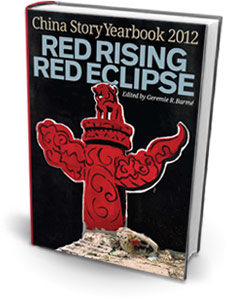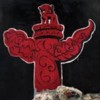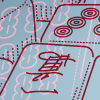
The China Story Yearbook brings together the various talents of the Australian Centre on China in the World. It is aimed at the engaged public, as well as specialists, journalists, businesspeople, diplomats and students.
The inaugural Yearbook is titled Red Rising, Red Eclipse, and it covers the period from 2009 to mid 2012. Produced by academics and writers who are members of or who are affiliated with the Centre the Yearbook offers a survey of Chinese politics, law, economics, regional diplomacy, Internet politics, thought, history and culture featuring academic analysis as well as a range of information lists and data compiled by the Centre in coordination with our collaborators at Danwei Media under the direction of Jeremy Goldkorn. The Yearbook took its final form during editorial discussions with Jeremy Goldkorn in March 2012 at Capital M, Qianmen, Beijing.
The Australian Centre on China in the World is a publicly funded research centre. We believe that it is important for us to provide broad access to our research and expertise without pay walls or charge. The Yearbook is a ‘cross-platform’ work. That is to say, it is being produced as a printed text (not for commercial distribution), as well as being made available via this site in downloadable PDF format, in the form of individual chapters, as an online text, e-text and in Kindle format.
You may read the contents of the book on this website, or by downloading any of the following free files (ePub format is for iPhone, iPad and digital readers other than the Kindle), or by ordering a printed edition (free apart from printing and delivery costs) at the link provided below.
DIGITAL EDITIONS
Complete editions of the book in different formats can be downloaded by clicking on these icons:
Kindle 3.7MBePub (iPhone / iPad) 4.3MBPDF 7MB
You can also read or download individual chapters of the Yearbook beneath the Print Edition section below.
PRINT EDITION
Printed paperbacks editions of the Yearbook can be ordered free (apart from the costs of printing and delivery) from Lulu.com.




















